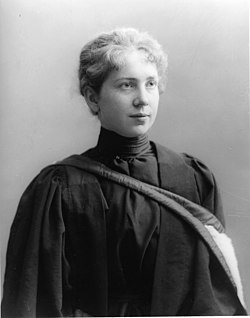Harriet Brooks
Harriet Brooks was once compared to Marie Curie due to her scientific abilities and her pursuits in the field of nuclear physics. She was the first woman to work in nuclear physics in Canada and is well known for her contributions to the work of Ernest Rutherford, the Nobel Prize laureate widely regarded as the father of nuclear physics.
Among her many significant contributions to nuclear science was her research on radioactivity and nuclear transformations, which involve the conversion of one element or isotope into another. She discovered that the "emanating gases" the emissions from the chemical element thorium were unlike the known alpha or beta particles of that time. By dispersing these emissions into the air, she concluded that they were radioactive gases with a molecular weight lower than that of the original element, thorium.
These findings greatly influenced the way her supervisor, Rutherford, along with Frederick Soddy, formulated their theory that elements could be transformed through molecular disintegration a fundamental conclusion for the development of nuclear physics and chemistry. Rutherford would later receive the Nobel Prize in Chemistry for this theory and acknowledged Brooks for her essential contributions.
Brooks's scientific journey was shaped by some of the greatest minds in science: in addition to her work with Rutherford, she also worked under J.J. Thomson at the Cavendish Laboratory at the University of Cambridge (1902), and with Marie Curie in Paris (1906), both of whom were Nobel Prize.
